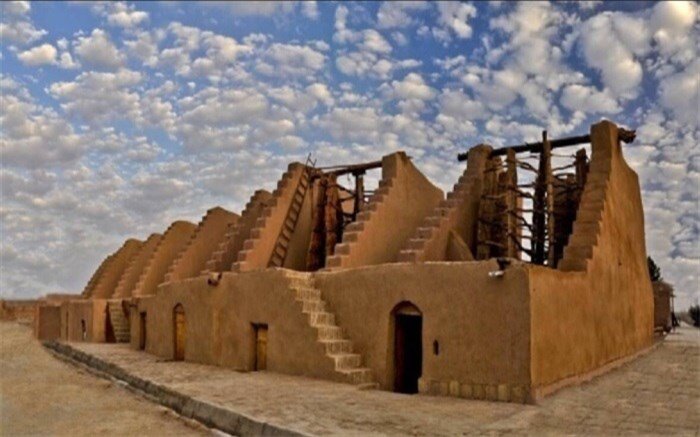Restoration work begins on ancient windmills southeast Iran

TEHRAN—Two ancient windmills in Hozdar historical area, southeastern Sistan-Balouchestan province, have undergone some rehabilitation works, the deputy provincial tourism chief has said.
A budget of 8.9 billion rials ($30,000) has been allocated to the projects, Mojtaba Sa’adatian explained on Monday.
Repairing damaged parts using original materials, strengthening the structures’ foundations, and restoring the rooftops are parts of the projects, the official added.
A collection of ancient Iranian windmills (locally called Asbads) has been inscribed on UNESCO's tentative list of World Heritage properties.
Experts believe such primitive yet significant machines bear testimony to the human being’s adaption to nature by transforming environmental obstacles into opportunities. Iranian Asbads enjoy a smart technique to grind grains, a technique that goes back to ancient times when the people living in the eastern parts of Iran invent it in an attempt to adapt themselves to nature and transform environmental obstacles into opportunities.
According to the latest official data, a total of 374 Asbads have been identified so far mostly in the eastern wing of the country, but not all of them in faultless conditions.
The development of Asbads took place due to the scarcity of water resources and continuous 120-day winds, which annually sweep through the east and southeast of the Iranian plateau from late May to late September. Wood, mud, and brick were the main construction materials for the two-story windmills.
Britannica says the earliest known references to windmills are to a Persian millwright in 644 CE and windmills in Seistan [Sistan], Iran, in 915 CE.
According to the UN cultural body, Robert Forbes, a technology historian, stresses the point that the Islamic era windmill was the invention of Iranian. He writes: "this invention, which was initially an exclusive device for Iran and Afghanistan, turned into an important source of energy all over the Islamic territories in the 12th century, and not only it was used for the grinding of grains and operation of water pumps, but also the chopping of sugarcanes and other purposes.
Technically speaking, unlike European windmills, the Iranian design is powered by blades arrayed on a vertical axis in which the wind power is directly translated down without the need for any gears found on the horizontal-axis mills.
The collective province —Sistan in the north and Baluchestan in the south— accounts for one of the driest regions of Iran, with a slight increase in rainfall from east to west and an obvious rise in humidity in the coastal regions. In ancient times, the region was a crossword of the Indus Valley and the Babylonian civilizations.
The province possesses special significance because it is located in a strategic transit location, particularly Chabahar, which is the only ocean port in Iran and the best and easiest access route of the middle Asian countries to free waters.
The vast province is home to several distinctive archaeological sites and natural attractions, including two UNESCO World Heritage sites, namely Shahr-e-Soukhteh (Burnt City) and the Lut desert.
ABU/AM
Leave a Comment